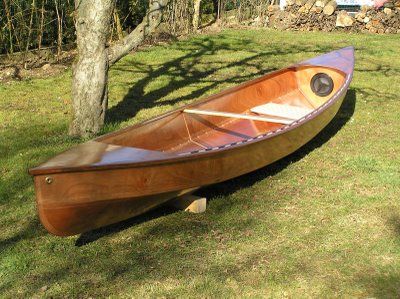Well you started it, but I did not treat your twaddle, as Twaddle! I tried to point you in the right direction.....but all you have mentioned as "being the way to go", is real Twaddle!!
Ride any distance sitting up, into a headwind, then with drop handlebars. End slab is 2 or 3 times your frontal body area. My built in resistance calculator tells me that, no fancy instruments needed.
Aerodynamics is not your strong point, is it?
If you take a simple plane wing, you will soon notice that it is thicker at the front, and tails off much thinner at the back, roughly the same as the trailer was designed.
This is because not only is the weight distribution important, as I previously mentioned, but also a large frontal area, but trailed at the back as you would like to do, causes a partial vacuum that is drag. The trailer manufacterer has designed the trailer, this way round, to reduce this drag to a minimum.
It actually works out to be far better to "push" the larger area first through the air, as it causes less drag at the front, than it would at the rear.
Strange but true!
The Royal Navy, sometime in the 1930's, decided to test drag on the then MK 8 Torpedo, and they designed basically 3 different nose cones. One cut off flat, one rounded and one heavily pointed. The drag results were (as in air), only microscopically different to each other, because water, as air, does the best to flow past the nose and "correct" any form's shape.
BUT, the major difference was found to be how the rear end was shaped, as it had a much larger drag effect, so the stern of the torpedo was designed not only to reduce drag, using twin rotating propellors, but the exhast from the 400PS Oxygen breathing Diesel engine, was aldo funnelled through the prop shaft, to reduce drag even more!
Which is of course why many cars have spoilers, to reduce the drag at the rear of their cars.....
Silly me, I forgot, a pound of feathers is heavier than a pound of steel! It's about gm/sqm to be accurate. Sides are not load bearing, the base is, so base would be ply. You are suggesting using 1.2mm ply or 3mm ali?
Noseweight is adjustable by axle position.
Conclusion - hmm, not sure about your mechanical ability.




Actually, I am more worried about your lack of knowledge demonstrated openly here, than my mine!! Do remember, that the sides have to support the base, to prevent collapse!!
I wonder how a piece of laminated caravan side panel would equate in gm/sqm, pre painted thin ali/foam/plywood/finish all in one, sourced from a caravan scrapyard? They also sometimes have dinky double glazed windows and rooflights/vents.
Are caravan floors solid ply or a honeycomb inner???
My personal taste would be the so called wet epoxy and ply method, as it is much stiffer, and physically stronger than alu sheet in any form, which is why few boats are every built of Alu when they need strength and a very low weight, simply because it is far too pliable, and requires masses of bracing, therefore extra weight, just as the trailer manufacturer has apparently done, which explains the basic weight they have achieved.
If you read the following article:-
Lightweighting a Plywood Canoe – Eureka 15kg (36lbs)
A whole bunch of strategies for lightweighting a plywood stitch and glue canoe. In this case a Storer Boat Plans Eureka Canoe. Standard build is around 44lbs. Ten lbs were saved to bring the weight down to 34 or 15k

www.storerboatplans.com
You will see that 15Kg and even one of less than 9 Kg., were designed and made, in a very simple ply and epoxy method.
These canoes are quite a lot longer than the trailer, so comparison can easily be made, that a trailer using the same method, could also be built far lighter than the trailer we are discussing, but of course, it would cost more to make.
Reference is made by some others who build canoes, to them even using carbon fiber (used in the structure of modern racing cars) and Epoxy, a quick look around on the web and you can find much more about strong and lightweight designing!!
Alu is not the lightest building material, but maybe the cheapest.
If there are any parts of what I have written here, that you still do not understand, ask an engineer!
I thoroughly enjoyed your comments though, as they all gave me a damn good laugh, so many thanks for that!




Happy weekend
Andy

 newatlas.com
regards to all
newatlas.com
regards to all







